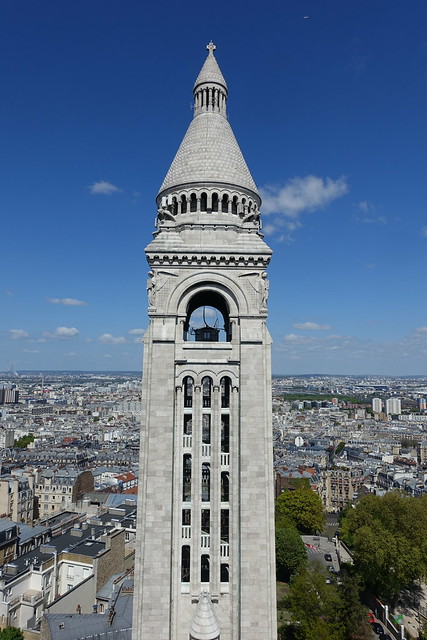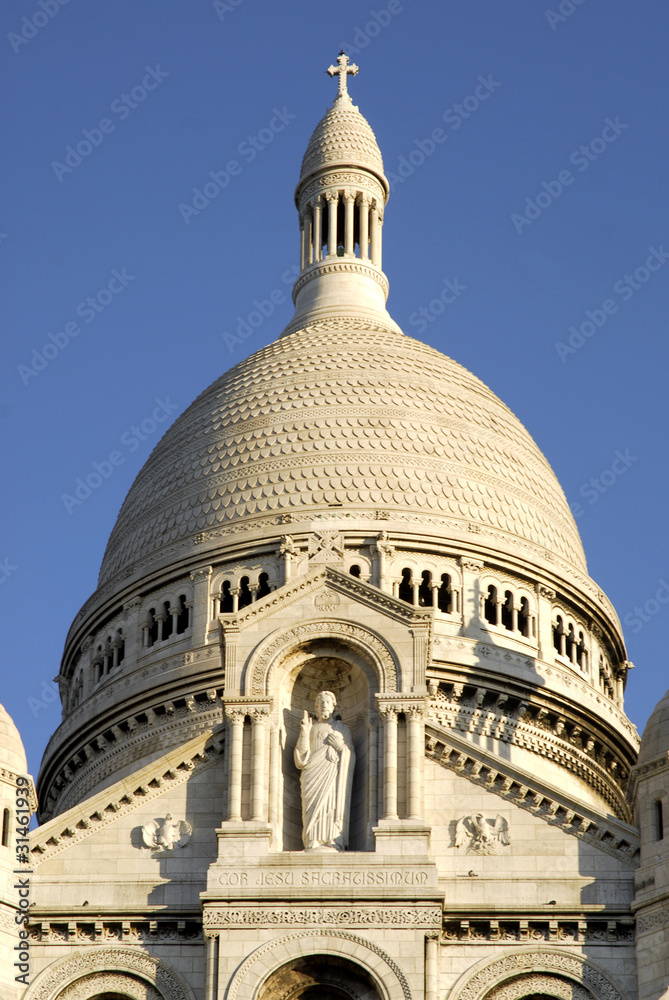Perched atop Montmartre, the highest point in Paris, the Sacré-Cœur Basilica is a beacon of faith and architectural grandeur. While the entire basilica is a masterpiece, its dome holds a special allure. It not only provides a stunning architectural feature but also offers unparalleled panoramic views of the city. The dome is more than just a physical structure; it’s a symbol of hope, resilience, and artistic achievement.
Historical Context: A Vow and a Nation in Turmoil
The story of the Sacré-Cœur Basilica, and thus its dome, is intertwined with the tumultuous events of 19th-century France. Following the Franco-Prussian War (1870-1871), France was in a state of deep mourning and political instability. Alexandre Legentil and Hubert Rohault de Fleury, prominent figures in Parisian society, attributed France’s defeat to its moral and spiritual decline. They proposed building a church dedicated to the Sacred Heart of Jesus as an act of national penance and a plea for divine intervention.
The idea gained traction, and in 1873, the National Assembly officially sanctioned the project. The basilica was envisioned as a symbol of hope and reconciliation, intended to atone for the sins of the nation and to reaffirm France’s Catholic identity. The location chosen was Montmartre, a hill with historical significance, believed to be the site of Saint Denis’ martyrdom.
Architectural Design: A Romanesque-Byzantine Fusion
The design of the Sacré-Cœur Basilica was entrusted to Paul Abadie, who won the architectural competition in 1874. Abadie’s vision was a unique blend of Romanesque and Byzantine styles, drawing inspiration from churches like the Hagia Sophia in Istanbul and St. Mark’s Basilica in Venice. This fusion resulted in a distinctive aesthetic that set the Sacré-Cœur apart from other Parisian landmarks.
The dome is a central element of Abadie’s design. Its rounded form contrasts sharply with the Gothic architecture that dominated Paris at the time. The dome is not just a decorative feature; it is an integral part of the basilica’s structural and symbolic framework. Its height and prominence serve to draw the eye upward, towards the heavens.
Construction: A Monumental Undertaking
The construction of the Sacré-Cœur Basilica, including its dome, was a monumental undertaking that spanned several decades. Work began in 1875 and continued until 1914, with the basilica finally consecrated in 1919, after the end of World War I.
The construction process was fraught with challenges. The location on Montmartre presented logistical difficulties, requiring the transportation of vast quantities of stone and materials up the steep hill. The chosen stone, travertine from Château-Landon, was known for its self-healing properties, gradually hardening and whitening over time, contributing to the basilica’s distinctive appearance.
The dome’s construction involved complex engineering techniques. It is a double-shelled structure, with an inner dome providing the interior ceiling and an outer dome providing weather protection and structural support. This design allowed for a lighter structure without compromising its stability.
The Dome’s Features: Artistry and Symbolism
The dome of the Sacré-Cœur Basilica is adorned with intricate details that reflect the basilica’s religious and national symbolism. The interior of the dome is decorated with a vast mosaic, one of the largest in the world. This mosaic, created by Luc-Olivier Merson, depicts Christ with his Sacred Heart, surrounded by saints, angels, and figures representing France. The vibrant colors and intricate details of the mosaic create a mesmerizing effect, drawing visitors into a realm of spiritual contemplation.
The exterior of the dome is equally impressive. Its white stone gleams in the sunlight, making it visible from many parts of Paris. The dome is topped with a lantern, a small structure that allows light to enter the interior. The lantern is surmounted by a cross, a symbol of Christ’s sacrifice and resurrection.
Ascending the Dome: A Panoramic Pilgrimage
One of the most rewarding experiences for visitors to the Sacré-Cœur Basilica is the ascent to the dome. After climbing a seemingly endless spiral staircase, visitors emerge onto a viewing platform that offers breathtaking panoramic views of Paris.
From this vantage point, the city unfolds in all its glory. Landmarks such as the Eiffel Tower, Notre Dame Cathedral, and the Louvre Museum are clearly visible. The Seine River snakes its way through the city, reflecting the sunlight. The rooftops of Paris, with their distinctive zinc and slate, create a mesmerizing tapestry.
The view from the dome is not just a visual spectacle; it is also a historical and cultural experience. From this elevated perspective, visitors can appreciate the city’s layout, its architectural diversity, and its rich history. The dome provides a unique vantage point from which to contemplate the city’s past, present, and future.
Significance: Faith, Art, and National Identity
The dome of the Sacré-Cœur Basilica holds profound significance on multiple levels. As part of a religious structure, it symbolizes the aspirations of faith, hope, and divine grace. The dome’s height and prominence serve to draw the eye upward, towards the heavens, inviting contemplation and spiritual reflection.
As an architectural masterpiece, the dome represents the culmination of artistic vision, engineering skill, and craftsmanship. Its Romanesque-Byzantine design, its intricate details, and its sheer scale make it a testament to human creativity and ingenuity.
As a national monument, the dome embodies France’s history, culture, and identity. It stands as a reminder of the nation’s past struggles, its resilience, and its enduring commitment to its values. The Sacré-Cœur Basilica, and its dome, is a symbol of national reconciliation and a beacon of hope for the future.
Visiting the Dome: Tips and Considerations
- Plan Ahead: The Sacré-Cœur Basilica is a popular tourist destination, so it’s advisable to visit during off-peak hours or on weekdays to avoid crowds.
- Be Prepared for the Climb: The ascent to the dome involves climbing a long and winding staircase. Wear comfortable shoes and be prepared for a bit of physical exertion.
- Respect the Sacred Space: The Sacré-Cœur Basilica is a place of worship. Dress modestly and maintain a respectful demeanor.
- Bring Your Camera: The panoramic views from the dome are unforgettable. Don’t forget to bring your camera to capture the moment.
- Check Opening Hours: The dome has separate opening hours from the basilica itself, so check these in advance of your visit.
Conclusion: A Lasting Legacy
The dome of the Sacré-Cœur Basilica is more than just a physical structure; it’s a symbol of faith, hope, and national identity. Its historical significance, architectural beauty, and panoramic views make it a must-see destination for anyone visiting Paris. The climb to the top is a journey that rewards visitors with a breathtaking spectacle and a deeper understanding of the city’s rich history and culture. The dome stands as a testament to the enduring power of faith, art, and human aspiration. It remains an iconic landmark, inspiring awe and wonder in all who behold it.


